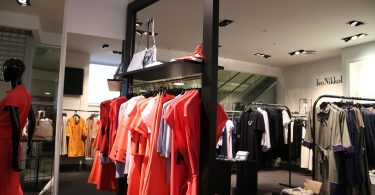When, in 1871, critic Robert Buchanan took exception to the poetry of Dante Gabriel Rosetti and the artworks of Simeon Solomon, it was on the grounds of them being ‘fleshly’. By t
When, in 1871, critic Robert Buchanan took exception to the poetry of Dante Gabriel Rosetti and the artworks of Simeon Solomon, it was on the grounds of them being ‘fleshly’. By this he meant that the artworks were both overly sexualized and displayed a ‘morbid deviation from healthy forms of life.’ Whilst the first of these comments has become almost over-associated with the works of Pre-Raphaelite artists, the second is less attended to.
The autumn 2012 Tate Britain exhibition ‘Pre-Raphaelites: Victorian Avant-Garde’, certainly does showcase a lot of flesh, but only half of it is appears in the lush setting of an aesthetic Rossetti work. The rest could be better explained with Buchanan’s intended derogatory description ‘nothing virile…nothing completely sane.’
Aside from getting overwrought with self-righteous pronouncements about sensuality, Buchanan was also wrong when he degreed these qualities to be necessarily bad in an artwork. Instead, what the pallid, microscopically detailed skin depicted in early works such as John Everett Millais’s Christ in the House of His Parents and William Holmon Hunt’s Valentine Rescuing Sylvia from Proteus confront the audience with is the fallibility of the human body. Instead of getting consumed by Eros, the viewer is threatened by Thanatos.
Nowhere, perhaps obviously, is this more apparent than in Millais’s Ophelia. Previously branded ‘the nation’s favorite painting’ and reproduced on everything from hideous tapestry cushion covers to Christmas biscuit tins, this masterpiece is tragically overlooked. Aside from one elderly gentleman who, upon approaching the painting, exhaled a breathy “Oh, yes!” I did not witness many visitors paying her much attention. As with all the paintings on display here, the trick to really seeing what makes them so fantastic is to get close enough to lick the glass.
I do not recommend you actually waste time slobbering on the framing, but instead take a look, like you are seeing it for the first time, at Elizabeth Siddall’s hand just breaking the surface of the water. Acknowledge how hauntingly real it looks, how it appears almost possible for you to take hold of the cold fingers and stop her going under. Her open mouth and ambiguous expression have lead commentators to detect hints of sexual ecstasy, perhaps seeing her condition as the borderline between Eros and Thanatos. However it is hard, when really studying her face closely and ignoring the overwhelming beauty of the surrounding flowers, to think of anything but death. My excited, breathy co-visitor may disagree, but the tenderness and photographic exactitude of the sinking heroine’s skin against the blanket of water is heartbreakingly sad.
If sex really does make up for death, then before we luxuriate in the late Rossetti’s we need Millais to show us how terrible death is and how fragile the human body. Unlike with the V&A’s Cult of Beauty exhibition in 2011, the Tate show is not a vibrantly multisensory experience; instead the artworks – paintings, stained glass, tapestries and sculptures – are left quietly alone. For the uninitiated or avowed PRB hater, this may be disappointing. However, the advantage it serves is in letting the viewer spend quality undisturbed time with the artworks and allows them to muse on themes and details, such as the depiction of flesh.
Whichever part of the human psyche we are dealing with when considering Pre-Raphaelite paintings, it is noticeable that the ones that fail to convince are those in which flesh is painted in a far more haphazard and inaccurate manor. Take, for example, the saccharine stickiness of the baby’s bony face in Ford Madox Brown’s Pretty Baa Lambs or the drunk-looking leer of the man in Hunt’s The Hireling Shepherd. In both examples we see stagnant pink flesh as unreal and as stultifying as that painted by Thomas Gainsborough. Personally, I find this far more repulsive than any overt reference to sex by Rossetti. It is in their ability to paint cold, grey flesh – as though a precursor to Lucian Freud – where the Pre-Raphaelites succeed and when this is absent what is left becomes syrupy and mawkish.
In the run up to this show, much has been made of the greater inclusion of women artists – mainly Elizabeth Eleanor Siddall and Rosa Brett – as the Tate’s last major PRB show in 1984 was heavily criticized for omitting this. However, firstly, had I not listened to curator Alison Smith on Women’s Hour a day or two before, I do not think I would have noticed this as an obvious part of the show – the vast majority of the art works remain by male artists. Secondly, the fixation on remembering art historians Griselda Pollock and Deborah Cherry’s criticism of the exhibition as only relating to female representation is a reductive interpretation. For not only did they bemoan the omission of women artists, they also detected insensitive attitudes to race, class and sexuality.
Therefore, perhaps just as important the inclusion of Siddall’s artworks is the –albeit small – recognition given to the homosexual Jewish artist Simeon Solomon. Although only represented by a delicately sketched self-portrait and his beautiful aesthetic painting of an androgynous Bacchus, that he is included at all is a heartening and timely acknowledgment of an artist who – preceding Oscar Wilde – became mired in disrepute following an arrest for attempted sodomy in his own lifetime. If we are to accept that it is as important to acknowledge female as it is male artists, then we must simultaneously remember that this is all part of the same egalitarian discourse which recognizes those of all sexualities to be equal too.
If, then, there is one thing above all others I would like to congratulate Alison Smith on then it is probably this. I would also like to mention the courageous choice of a deep red for the walls of the first two rooms, which excited me so much I felt the need to text other Art History geeks about it, and the sumptuous dark aubergine of the last two. This choice of paint proved how just a little concession towards the V&A’s way of doing things, without going overboard, can make all the difference when creating an environment suitable for particular artworks.
Running until 13th January 2013, the exhibition is well worth a visit not least because when you think you have seen it all before, chances are you have barely bothered opening your eyes.
Pre-Raphaelites: Victorian Avant-Garde
Tate Britain 12th September 2012 – 13th January 2013








